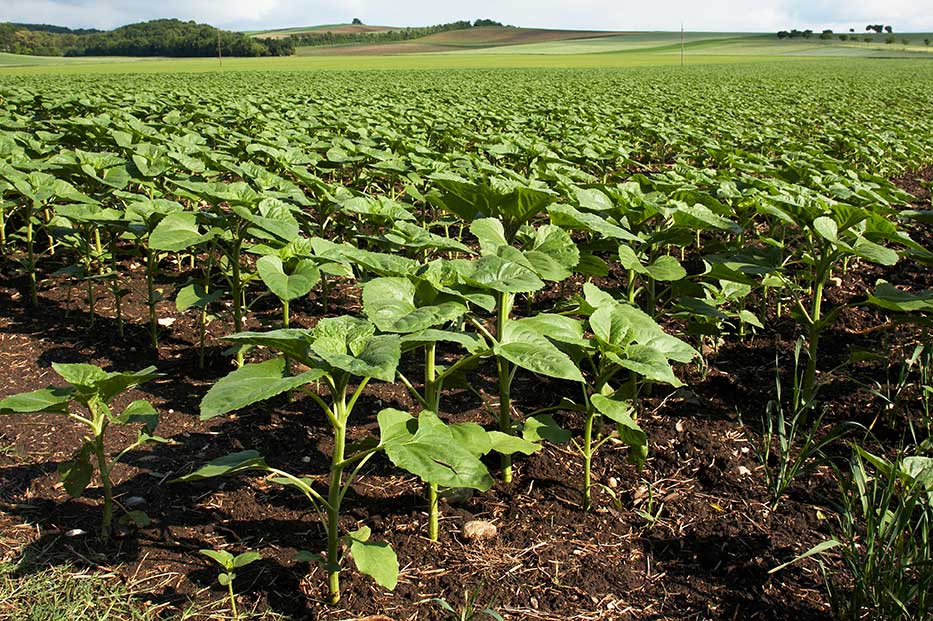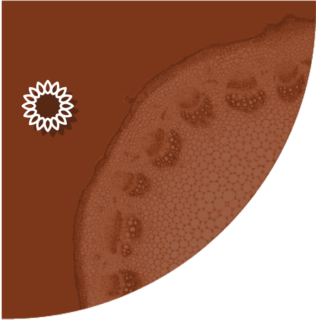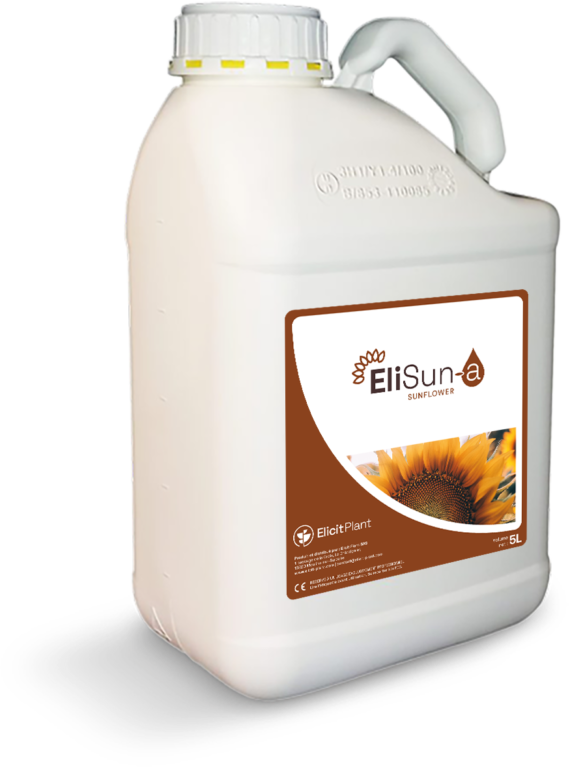Sunflowers typically reach the 8 to 10 leaf stage towards the end of May. This is the ideal time to plan the application of EliSun-a : our solution based on phytosterols that enhances plant resistance to drought stress. It’s also possible to supply boron, a crucial trace element, at the same sunflower development stage, to benefit from the complementary advantages of both solutions.
Fairly common boron deficiencies
Boron is an essential trace element, the deficiency of which can reduce sunflower yield by 4 to 5 quintals per hectare according to Terre Inovia. Boron promotes pollen fertility and therefore seed production. Sunflower’s needs are around 400 g of boron per hectare, which the plant absorbs between the 6-leaf stage and the beginning of flowering. Deficiency can occur when the soil is boron-poor, but it can also be induced by situations that hinder the assimilation of this trace element by the roots even when the soil is well provided. Among these risky situations are overly dry conditions, the presence of shallow or filtering soils, a pH above 7.5, as well as poor root development.

1. Malformation of reproductive parts – 2. Stem shearing – 3. Scorching at the base of the blade
Act before symptoms appear
Signs of deficiency are characterized by scorching at the base of the leaf blade and/or shearing at the base of the capitulum. However, when sunflower shows these symptoms, it’s already too late. Therefore, it’s crucial to supply boron preventively, especially in risky situations. To meet the needs, an application of approximately 400 g/ha is recommended foliarly, between the 8 to 10 leaf stage and the tractor passage limit.
Phytosterols are compounds naturally present in plant cell membranes, playing a crucial role in maintaining the structure and function of these membranes, particularly in the case of drought stress, which is also critical for boron assimilation.
More resistant sunflowers thanks to phytosterols
The phytosterols in EliSun-a act on plant cell membranes and regulate their response to water deficiency, lasting until harvest. As with boron, the intervention should be carried out at the 8-10 leaf stage during the vegetative phase, before the appearance of the floral bud. It’s interesting to combine the supply of boron with that of phytosterols, firstly because the two solutions are compatible, but above all because their effects synergize to maximize sunflower yield.
Regarding EliSun-a, an application of one liter per hectare is recommended. It’s demonstrated that phytosterols stimulate root growth, reduce leaf wilting, alleviate senescence during grain filling phase, and promote grain number (5% fertility gain). The more resistant sunflower averages a yield gain of 3.2 q/ha (2023 data, Elicit Plant).




